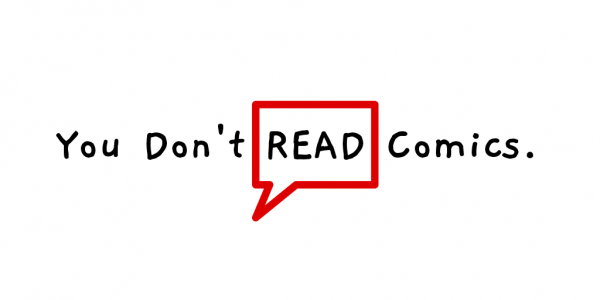Juvenile #3 // Review
Max and Sara aren’t talking in class. They’re thinking to each other. So okay: so they’re not disrupting the rest of the class, but they aren’t exactly paying attention. So they could end up in trouble if it becomes apparent that they’re not paying attention. They’re going to get into a whole lot MORE trouble than that in Juvenile #3. Writer/artist Jesús Orellana continues an incredibly dense little paranormal drama that delves a little bit further into the relationship between the two leads and the world around them. It’s pretty dark stuff all around but the forward momentum of the plot provides more than enough energy to suggest something electrifying on the horizon.
Later-on they’re both up. Everyone else is sleeping. They can still think to each other telepathically. There’s going to be a bit of a challenge they’re as they are only starting to feel a strong connection with each other and an equally strong connection with their powers. So they find themselves hovering above a common room and looking out at the stars in the night sky. And then...a guard finds them hovering there and things start to get quite a bit more complicated for both of them.
Orellana is working on a remarkably small canvas. It’s just two kids falling in love in incarceration...and they’ve got powers. The wonderfully romantic feeling of a couple feeling love for hte first time and they’re actually able to talk to each other telepathically. Who doesn’t feel like that the first time they fall in love? It’s a gorgeous sort of a connection that is stripped of anything else that would serve as a distraction from it...aside from the ever-present dystopian darkness of the hospital prison that they’re forced to live in.
And that hospital prison DOES feel a bit more sweepingly rendered in the third issue than it had in either of the previous two issues. Prior to this, Orellana had only allowed for snippets of images of the facility around the edges of the drama. In the third issue, Orellana allows for wider shots at the facility, which really is its own character. The layout of the facility feel remarkably well thought-out in a series of wide-angle shots that help establish the world that Sara and Max are inhabiting. It’s some pretty remarkable stuff floating through the heart of a really engrossing story.
Orellana is clearly ramping-up to a big climax as the issue draws momentum towards the end of the last few pages. The menace is clearly there and the danger feels kind of overwhelming, but it’s a lot of fun to get into it and by this point, Orellana is definitely delivering strong enough emotional connection with the characters to allow for a definite sense of concern about them and their fate. It’s a brilliantly-rendered drama that continues to find novel and interesting ways of exploring the very, very familiar concept of young love in an unjust system.










